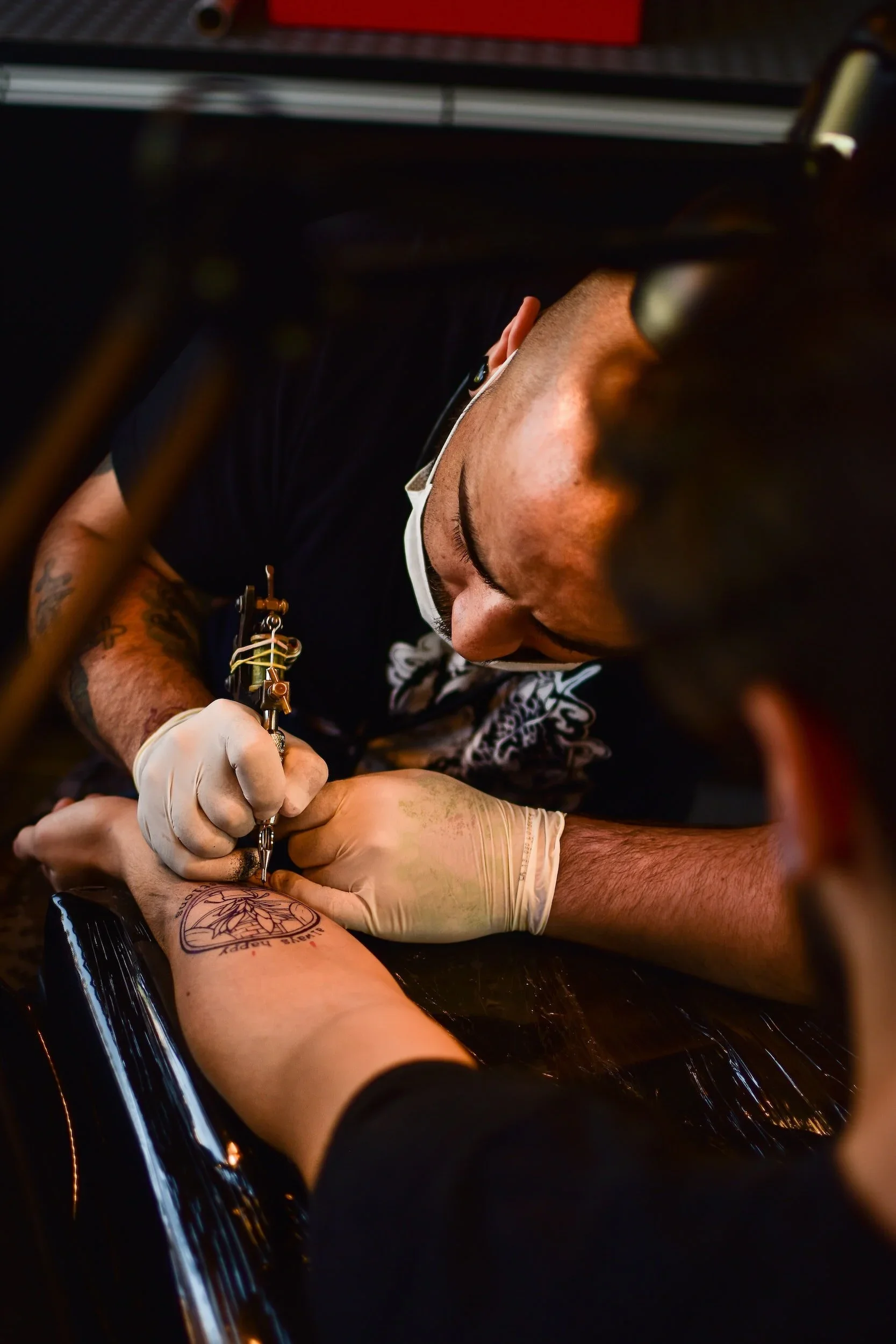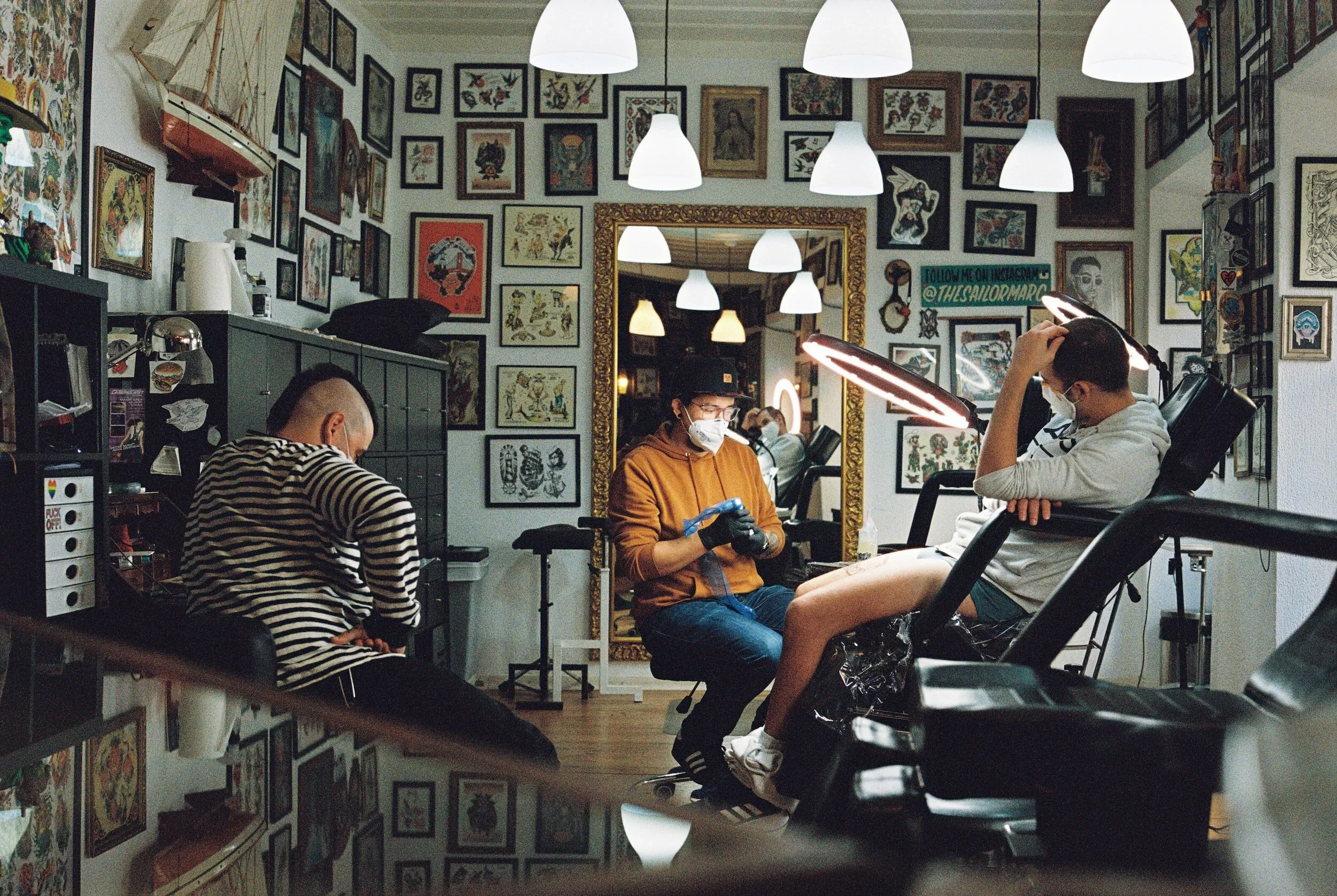How to Put Together a Portfolio for Tattoo Apprenticeships
How to Put Together a Portfolio for Tattoo Apprenticeships
So you wanna be a tattoo artist. Not just some hobbyist scribbling skulls in a sketchpad, you’re aiming for the real thing. The shop, the gun, the mentorship. But before you ever touch skin, there’s one thing standing between you and that apprenticeship: your portfolio.
Think of it like your mixtape. It’s gotta show range, flex your style, and make someone stop mid-scroll or mid-latte and say, “Yo, this kid’s got it.” Problem is, most folks either overdo it with random doodles or under-deliver with three Instagram screenshots and a prayer.
This guide breaks down exactly what to include, what to skip, and how to package your art like you’re pitching to your dream shop (because you are). No fluff. No corny advice. Just the straight-up cheat codes to build a tattoo portfolio that actually opens doors.
Ready to level up? Cool. Let’s build something worth inking.
What Is a Tattoo Apprenticeship?
A tattoo apprenticeship is your foot in the door to the ink world. It’s like bootcamp, but with more blood and better art. You’ll shadow a pro, clean stations, prep gear, and soak up everything, from hygiene rules to needle know-how. No, you won’t be tattooing right away. First, you’ll learn how to draw for skin, not just sketchbooks.
Over time, you’ll level up: from grunt work to lining practice to finally tattooing real people. It’s not always glamorous, but it’s how every legit tattoo artist gets their stripes. No shortcuts, just skills, hustle, and a lot of respect.
Why a tattoo portfolio for apprenticeship Matters
Your portfolio is your first impression, your handshake before the handshake. Tattoo shops aren’t just looking for raw talent, they want to see commitment, style, and potential. A solid portfolio shows you’re serious, not just a fan of Ink Master reruns. Mentors look for clean line work, consistency, and an eye for design that could translate to skin. It’s less about perfection and more about promise. If your portfolio feels lazy or all over the place, it’s an easy “no.” But if it’s dialed-in? You just might earn that shot to step behind the chair.
Key Elements of a Strong Tattoo Portfolio
A. Creativity and Unique Concepts
Your portfolio should scream at you. Don’t recycle flash from Pinterest. Show concepts that feel personal, like they belong on someone’s skin forever. Think weird, bold, emotional, whatever your flavor is. Just make it yours. Tattoo shops want original thinkers, not copy-paste artists.
b. Strong Drawing Fundamentals
Clean lines, confident shading, and solid anatomy, these aren’t extras, they’re your foundation. Toss in life drawing studies to prove you get how the human body moves. If you can draw muscles, joints, and faces well, you're already ahead of the pack. No shortcuts here, fundamentals always flex hardest.
c. Variety of Tattoo Styles
Even if you’ve got a favorite style, show range. A little traditional. A touch of realism. Maybe some fine line or blackwork. This proves you’re versatile and ready to learn. Apprenticeships are about growth, not staying in one lane. Shops want someone who can adapt and evolve.
d. Best Work Only
Curate like your future depends on it, because it does. 50 to 100 solid pieces is the sweet spot. Ditch old work or anything half-baked. Every page should hit. If it’s not portfolio-worthy, it’s not going in. Think: quality over everything. No filler, no fluff, no regrets.
e. Both Digital and Hand-Drawn Work
Flex both your pen game and your tablet game. Digital art shows you're keeping up. Hand-drawn work shows you’ve got roots. A good mix proves you're not leaning too hard on tech or tradition. Bonus: it shows how your art translates across mediums, super important when you start tattooing.
Physical vs. Online Tattoo Portfolios
You need both, no debate. A physical portfolio is your in-person flex. It shows you’re serious, organized, and put effort into your presentation. Bring it when visiting shops or meeting mentors face-to-face.
Online? That’s your 24/7 wingman. Perfect for reaching out to shops that aren’t local or sliding into DMs with a clean link. It makes it easy for people to share your work or check it out without a whole meeting.
Use platforms like Instagram, Behance, or a simple Squarespace site. Keep it clean, easy to scroll, and mobile-friendly. No autoplay music. No messy navigation. Just art, front and center. Building a strong online presence like this is a key step to become a successful tattoo artist in today’s scene.
How to Structure Your Portfolio for Maximum Impact
a. Organized Gallery (Physical or Digital)
Your layout should feel smooth, not like a messy art dump. Use clear dividers or folders for physical copies. For digital, think simple: grid or scroll, no weird sliders. The goal? Make it easy for someone to actually look at your work without getting lost or annoyed.
b. Categorize by Style or Theme
Grouping your work helps people get you fast. Sort by style, like traditional, blackwork, realism, or by concept, like animals, florals, or lettering. This shows your range without needing a long explanation. Plus, it makes your portfolio way easier to skim, which is a big win in busy shops.
c. About You (Bio/Intro Page)
Keep your bio short and real. Who are you, where are you from, and why do you want this? Skip the fluff. Share your art background, influences, and what drives you. It’s not a resume, it’s a vibe check. Shops want to know who they’re mentoring, not just what you draw.
d. Contact Information
Make it dead simple to hit you up. Include your email, phone (if you're cool with it), and maybe a link to your online portfolio. No broken links or weird usernames. Keep it clean and professional, even if your art is edgy, your contact info shouldn’t be chaos.
e. Social Media Links
Your Instagram is part of your portfolio. If you're posting work consistently, that’s a major flex. Link your main art account, not your meme spam. Let them see your growth, your consistency, and how you connect with people. Pro tip: keep your grid looking like a curated gallery.
f. Artist Statement or Inspiration Page (Optional)
This part’s optional, but if you’ve got something to say, say it here. Why tattoos? What inspires your designs? Don’t write a novel, just a few lines that give your work some soul. If your portfolio is the what, this little blurb is the why. Keep it honest, not cheesy.
Portfolio Presentation Tips
Keep your portfolio sharp and current. Outdated or sloppy work kills vibes faster than a bad tattoo joke. Only use high-res images, blurry pics don’t do your art justice. When applying, tweak your portfolio to match the shop’s style or vibe. And please, skip filler stuff and unfinished sketches. Every piece should earn its spot.
Mistakes to Avoid in a Tattoo Portfolio
Don’t include traced or copyrighted art, shops spot that instantly and it’s a hard pass. Avoid cluttered layouts that make your work look chaotic or lazy. Also, if you’re showing tattoos you’ve done, wait until they’re fully healed and looking fresh. Poor-quality photos or rushed tattoos won’t score points. Remember, becoming a tattoo master starts with respect for the craft, and that means presenting your best, most honest work every time.
Frequently Asked Questions (FAQ)
-
Aim for 50 to 100 strong designs, quality over quantity always.
-
Only if they’re healed and look professional.
-
Best to keep your portfolio original; fan art might raise red flags.
-
Brief captions can help, but don’t overdo it. Let the art speak mostly for itself.
Conclusion / Final Encouragement
Building a portfolio takes time, patience, and a bit of ego-checking. Keep creating, keep pushing your style, and don’t get discouraged. A solid portfolio isn’t just a folder, it’s your ticket into the tattoo world. Nail it, and those doors open wide.
Worried about tattoo pain?
Contact us for
pro tips!


